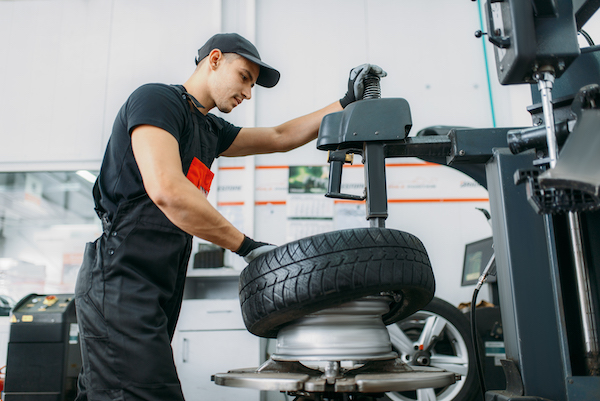Locate the Best Tires Morris IL: Extensive Choice Available
Locate the Best Tires Morris IL: Extensive Choice Available
Blog Article
Tire Service: Comprehending Tire Stress Monitoring Equipments
Recognizing Tire Pressure Tracking Equipments (TPMS) is a critical facet of preserving optimal automobile efficiency and safety on the road. With innovations in automotive innovation, TPMS has actually come to be a conventional attribute in contemporary cars, supplying real-time details on tire pressure levels.

Relevance of TPMS
The value of Tire Pressure Monitoring Equipments (TPMS) hinges on their capability to boost vehicle safety and security and efficiency via real-time tracking of tire pressure levels. Preserving the correct tire stress is vital for making certain optimum handling, braking, and total security of an automobile. TPMS gives motorists with instant feedback on any overinflated or underinflated tires, allowing for timely adjustments to be made.
Components of TPMS
Comprising numerous necessary components, a Tire Stress Surveillance System (TPMS) works as an advanced safety and security feature in modern cars. The major parts of a TPMS include sensors, a control component, and a warning indication. Sensors are typically located in the tire shutoff stem or affixed to the wheel setting up, where they measure tire pressure and send information to the control component. If it spots dramatically low stress in any of the tires, the control module procedures this details and triggers a caution. The warning sign, typically an icon on the control panel, informs the vehicle driver to inspect the affected tire or tires. Some progressed TPMS versions additionally display the actual tire pressure analyses for every tire, providing drivers with real-time details to ensure ideal tire efficiency and safety. By keeping track of tire pressure continually, TPMS assists avoid mishaps, lowers tire wear, and enhances fuel efficiency, making it a critical element for automobile safety and efficiency.
Kinds Of TPMS

On the other hand, indirect TPMS relies on the car's wheel rate sensors to check tire stress. This system detects underinflation by contrasting the rotational rates of the wheels. Indirect TPMS is less costly than direct TPMS, as it makes use of existing sensing units within the car.
While direct TPMS offers a lot more exact readings, indirect TPMS is less complex in layout and commonly requires much less maintenance. Both systems have their limitations and advantages, and the option in between them often depends on aspects such as cost, car make, and individual choice. Comprehending the differences in between these 2 types of TPMS can aid car owners make educated choices regarding tire upkeep and security.
TPMS Maintenance Tips
Conduct regular checks on the tire pressure degrees and contrast them with the TPMS readings to guarantee they are consistent. During tire rotation or substitute, make sure that the TPMS parts are dealt with very carefully to prevent any kind of prospective damage. If the TPMS alerting light brightens on the control panel, resolve the problem promptly by inspecting the tire check over here pressures and the general system for any mistakes.
Benefits of Proper Tire Stress
Maintaining proper tire stress, as emphasized in TPMS Upkeep Tips, is essential for reaping the various benefits connected with ideal tire pressure levels. Among the primary benefits of maintaining the proper tire stress is improved gas efficiency. When tires are effectively inflated, there is check my site much less moving resistance, resulting in better gas economic situation. In addition, correct tire stress ensures even tire wear, extending the life expectancy of the tires and promoting more secure driving conditions. With the appropriate tire pressure, cars additionally have better handling and grip, particularly in damaging weather conditions. This can improve general driving efficiency and safety and security for the motorist and travelers. In addition, preserving optimum tire pressure can add to a smoother and a lot more comfortable experience by decreasing resonances and sound brought on by underinflated tires. Finally, the advantages of correct tire stress go beyond simply tire durability; they encompass enhanced fuel efficiency, improved safety, better automobile performance, and general driving comfort.
Conclusion
Finally, understanding tire pressure tracking systems (TPMS) is critical for maintaining ideal tire pressure and making sure car safety and security. By identifying the value of TPMS, recognizing with its elements, understanding the various types offered, sticking to correct maintenance tips, and understanding the benefits of preserving appropriate tire pressure, motorists can boost their driving experience and lengthen the life expectancy of their tires. Proper tire stress is key to secure and efficient vehicle procedure.

Report this page